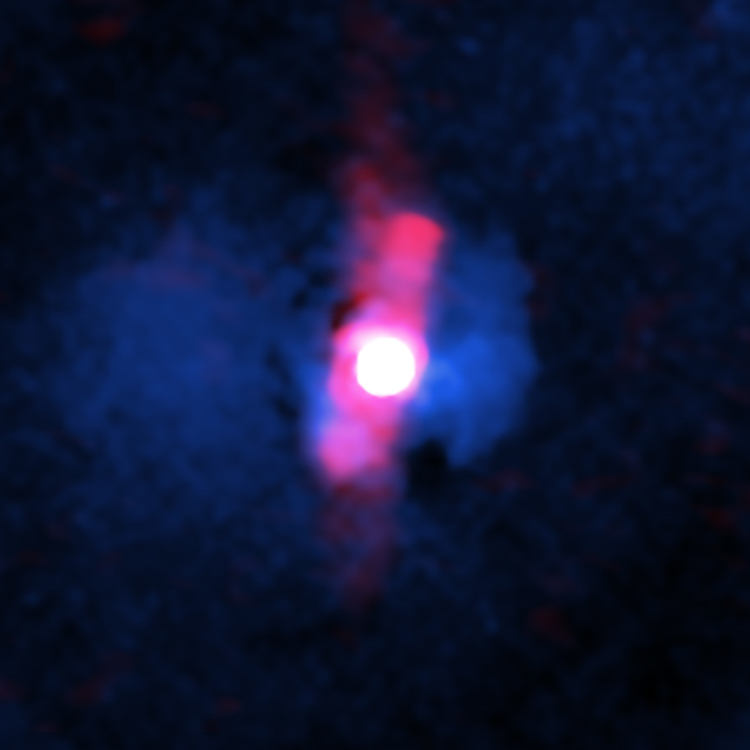
 Credit: X-ray: NASA/CXC/Univ. of Nottingham/H. Russell et al.; Radio: NSF/NRAO/VLA; Image Processing: NASA/CXC/SAO/N. Wolk
Credit: X-ray: NASA/CXC/Univ. of Nottingham/H. Russell et al.; Radio: NSF/NRAO/VLA; Image Processing: NASA/CXC/SAO/N. Wolk
A Quasar Under the Influence
Quasars, actively feeding supermassive black at the centers of galaxies, can produce an enormous outpouring of energy, generating as much energy as 100 trillion suns from a space no larger than the solar system. This enormous power can have a tremendous impact on the black hole's host galaxy, and far beyond. If the quasar resides in a cluster of galaxies, its energy output can, in principle, heat and disrupt the intergalactic gas between the galaxies within the cluster. But because most quasars are very distant, it's been hard to quantify exactly how much intergalactic influence these black holes have. A new study of one of the closest quasars residing in a galaxy cluster showed rather surprising results. This quasar, known as H1821+643, was studied by the Chandra X-ray Observatory to determine the quasar's influence on its surroundings. The black hole itself is a bright X-ray source, so this analysis required a careful correction for the amount of X-rays produced by the black hole before the X-ray emission from the surrounding area could be determined. The image above is a composite showing X-ray emission from H1821+643 in blue, and a jet of radio emission (as imaged by the radio dishes of the Very Large Array) in red. After correcting for the X-ray emission of the black hole itself, the result was surprising. The X-ray gas was relatively cool, showing little heating of the intracluster medium by the black hole at the center of H1821+643. Thus the influence of the powerful black hole at the center on the temperature of the surrounding gas was much less than expected.
Published: April 15, 2024
<
HEA Dictionary ● Archive
● Search HEAPOW
● Other Languages
● HEAPOW on Facebook
● Download all Images
● Education ● HEAD
>

Each week the HEASARC
brings you new, exciting and beautiful images from X-ray and Gamma ray
astronomy. Check back each week and be sure to check out the HEAPOW archive!
Page Author: Dr. Michael F. Corcoran
Last modified Monday, 22-Apr-2024 10:48:00 EDT


